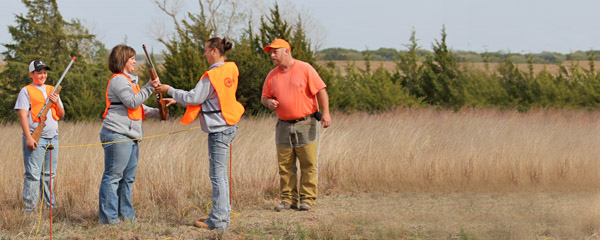 |
| 2012 Hunting incident report indicates hunting is a safe outdoor activity |
PRATT – A total of 17 hunting-related incidents were reported in Kansas for 2012, a decrease of 73 percent from 35 years ago. Since the implementation of programs such as Hunter Education and Pass It On, the Kansas Department of Wildlife, Parks and Tourism (KDWPT) has seen a steady decline in the number reported each year.
With thousands of hunters taking to the field each year, incidents are inevitable. However unfortunate, the majority reported were considered preventable.
Last year, hunters swinging on game, namely upland birds, accounted for eight of the reported incidents. Despite most of the parties involved wearing hunter orange, eight incidents related to a hunter firing toward and hitting another hunter in the field.
“Wearing hunter orange is not enough,” said Kent Barrett, KDWPT Hunter Education Coordinator. “Communication between hunters must be improved to prevent these types of incidents.”
Six of the 17 reports were categorized as careless gun handling, one of the most preventable types of incidents. From hunters pointing their barrels in unsafe directions, to firing what was thought to be an empty gun, it’s no surprise Hunter Education instructors are continually pressing their students to remember “load your brain before your gun.”
Two incidents were reported last year during spring turkey season in which hunters were mistaken for game, one of which resulted in the year’s lone fatality. In addition, KDWPT received one report of a hunter being struck by pellets from an unknown shooter; however this was considered a rarity.
Although even one incident can be tragic, the number of incidents is small in comparison to the total number of hunt days in the field. Statistically, hunting is one of the safest outdoor activities.
“Thousands of hunters take to the field each and every hunting season and return home without an incident to mar their excursion,” said Barrett. “We can maintain this legacy of safety by not taking shortcuts in recognized safety procedures and remaining aware of what we do with our firearms.”


No comments:
Post a Comment